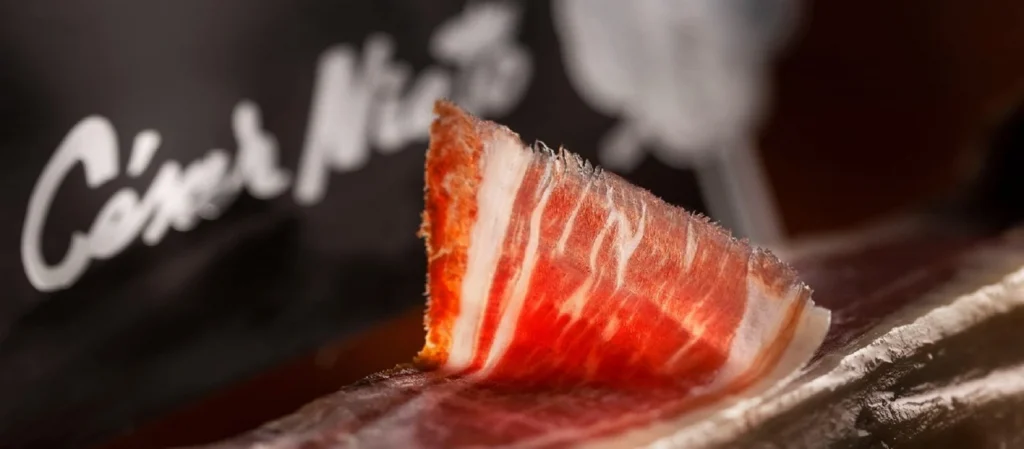When we talk about one of the star products of Spanish gastronomy, such as Iberian ham, we all think of its incredible flavor, aroma and texture. But do you know what are the processing stages until this delicacy reaches your table? Here we tell you about it.
Once the best animals have been selected for slaughter and quartering, and always under the personal supervision of the Nieto family, the ham pieces are subjected to the following processes:
SALAZON
All pieces of ham are coated with sea salt to promote dehydration and preservation by incorporating the salt into the muscle mass of the ham. In addition, salt contributes to the development of the color and aromas typical of cured products.
During this process, the hams remain in chambers with controlled temperatures between 0 and 5ºC and humidity between 70 and 90%. The salting time will vary according to the weight of the piece and its degree of purity. As a guideline, we can say that a ham should remain in these chambers for one day per kilo. In the middle of the salting period, the pieces are turned to achieve a homogeneous distribution of the salt.
LAUNDRY
Once the salting process is finished, the pieces are washed in warm water to remove the adhering salt. At the end of the washing process, the pieces are molded and shaped and then hung and placed in a chamber to begin the settling process, which will give them the ideal salt balance.
In this phase, the aim is to eliminate the humidity slowly, in order to achieve the correct diffusion of the salt in the ham mass. The duration of the salt-balancing process is about 35 to 45 days.
DRYING
The pieces of Iberian ham are moved to the natural drying sheds, which are equipped with large windows and where they are kept in semi-darkness. These dryers have windows with adjustable openings that allow the master chacineros to control ventilation and optimum humidity and temperature conditions.
This stage lasts between 12 and 14 months approximately, and is when the so-called “sweating of the pieces” occurs. The key to this process is that the temperature of the hams rises slowly and progressively as spring and summer approach. The exudation of hams is a stage in which the aromas begin to emerge and all their properties are defined.
MATURATION
After the drying stage, the pieces are classified by weight, quality and conformation and are sent to the natural cellars that César Nieto has in Guijuelo. Here, the hams finish their maturation process in cellars where the temperature ranges between 15 and 20ºC and relative humidity is around 60-80%.
It is during the maturation stage that the ham undergoes important enzymatic and biochemical changes, which will shape its texture and enhance the rest of its qualities (flavor, color and aroma).
The Ibérico Standard includes in its conditions the minimum processing times that Iberian products must meet. In this sense, the maturation time for Iberian ham depends on the weight of the piece: for pieces weighing less than 7 kg, a minimum curing period of 600 days is established, equivalent to almost 20 months, while for pieces weighing 7 kg or more, the minimum curing period is 730 days, equivalent to 24 months.
At César Nieto, we have been able to combine the incorporation of new technologies with the traditional know-how of our ancestors. Thus, some processes such as salting, buttering and trimming of our pieces are still handmade to maintain the essence of our product. If you want to give or treat yourself to the delicious experience of a César Nieto Iberian ham, all you have to do is visit our online store, where you will find all the varieties and in different presentations.
